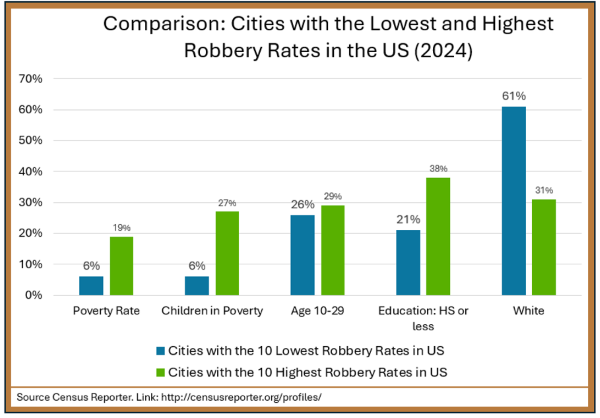The FBI says crime rankings provide little insight into the many variables that mold crime in a particular city or other jurisdiction. However, comparing cities at the extremes of a ranking may reveal patterns that are difficult to detect in the middle range due to the multitude of factors that motivate criminal behavior. For example, consider the US cities with the lowest and highest robbery rates:
Surely, cities with less than 10 robberies per 100K inhabitants differ in important ways from cities with robbery rates in the hundreds, which can tell us something about criminogenic factors in the high-robbery cities. Here are some obvious differences:
So poverty, youth, limited education and race appear to be risk factors that increase robbery rates. What do you do with this kind of information? Initially, ask more questions, such as:
Are these mere correlations of high crime rates or actual risk factors that increase the likelihood of criminal behavior? What do I need to know to figure that out?
If they are true risk factors, why do they increase the likelihood of criminal behavior?
How do they interact with other risk factors to motivate criminal behavior?
What decreases the likelihood a risk factor will lead to criminal behavior? What increases it?
What can be done to minimize the negative impact of a risk factor?
What can be done to eliminate the risk factor?
Someday I’ll get around to exploring these questions in greater detail, but for now I’m going to move on.

